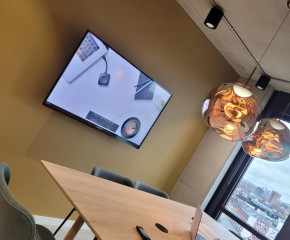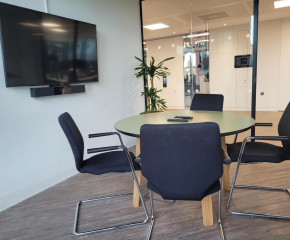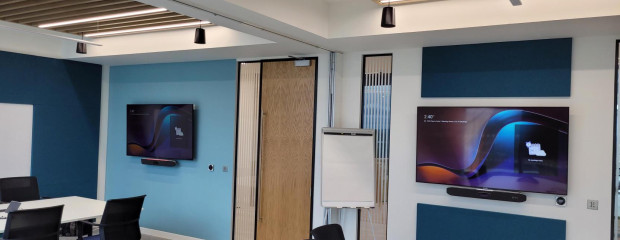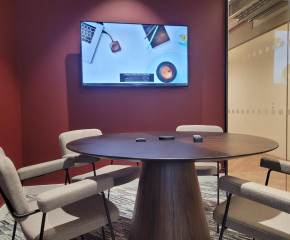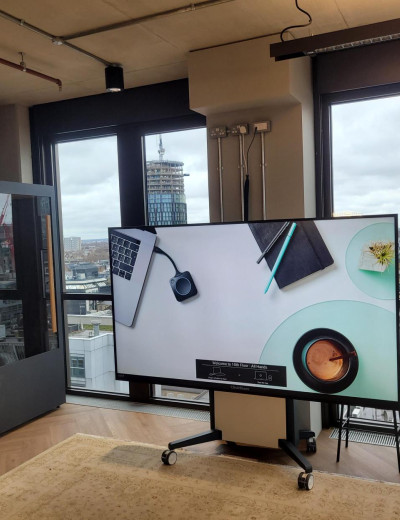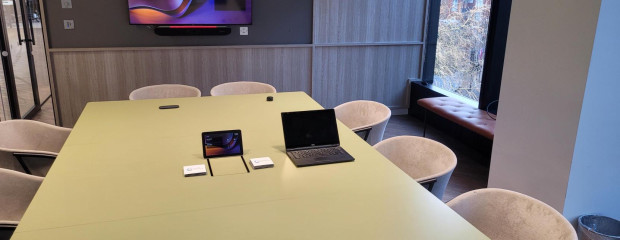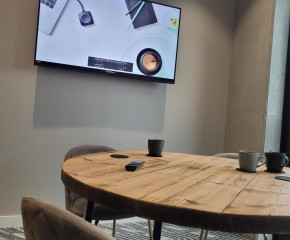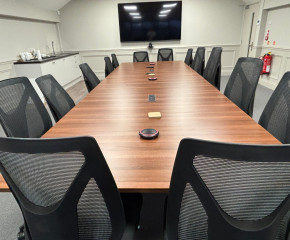Fixing issues with Acoustics in your meeting room: A How-To Guide

Fixing Issues with Acoustics in Your Meeting Room
In today's world of remote and hybrid work, virtual and hybrid meetings have become an essential part of our professional lives. However, while we often focus on the visual aspects of meetings, it's easy to overlook the critical role that acoustics play in creating a productive and comfortable meeting environment. Sound is just as important as the picture, and poor acoustics can significantly impact the effectiveness and productivity of your meetings. In this guide, we will explore common acoustic issues in meeting rooms and provide practical solutions to ensure that your meetings are clear, efficient, and frustration-free.
Common Acoustic Issues in Meeting Rooms
Before you can fix acoustic issues, it's essential to understand what you're dealing with. Over the years we’ve come across many different acoustic issues that clients may be facing, and we’ve summarised some common ones below:
1. Echo and Reverberation
Meeting rooms with many hard surfaces, such as glass, metal, wood, and concrete, can suffer from echo and reverberation. Sound bounces off walls, floors, and ceilings, making it hard to understand what is being said.
2. Background Noise
Any external noise from traffic, heating and air conditioning systems can disrupt your meeting.
3. Poor Sound Isolation
Sound leakage in and out of neighbouring rooms can lead to privacy concerns and distract participants.
4. Uneven Sound Distribution
If sound is unevenly distributed around your rooms, some participants may be louder or quieter than others, making it challenging to follow the conversation.
5. Resonance and Standing Waves
Certain frequencies may resonate within your room, causing an unpleasant hum or buzz.
 Acoustic Assessment
Acoustic Assessment
The first step in addressing acoustic issues in your meeting rooms is to conduct an acoustic assessment. This test provides a baseline from which you can compare the effectiveness of various solutions. Working with a professional consultant is best because they can identify the issues accurately and propose tailored solutions.
Options for Fixing Acoustic Issues
Once you've identified the acoustic issues, it's time to consider solutions. Here are some effective ways to address common acoustic challenges in your meeting spaces:
1. Acoustic Treatments
Incorporate sound-absorbing materials, ceiling panels, and wall coverings to minimise unwanted noise reflections.
2. Soft Furnishings and Décor
Adding soft furniture, rugs and curtains can play a vital role in dampening sound and reducing reverberation in your room.
3. Room Layout
Some rooms can have problem spots, especially those with curved walls or high ceilings. Simply rearranging the furniture in these rooms can create a more acoustically balanced environment, ensuring that sound travels effectively to all participants.
4. Microphone and Speaker Placement
Use quality microphones and speakers to ensure the best possible audio quality. Proper placement of these devices is key for clarity and even sound distribution.
5. Acoustic Furniture
Explore a wide range of acoustic furniture options for meeting rooms, including sofas, chairs, and stools made with sound-absorbing materials, available in various colours and finishes to complement your room's aesthetic.
6. Acoustic Panels
Install acoustic panels on walls and ceilings to absorb sound and reduce echo. These panels are available in numerous colours, shapes, sizes and finishes to match your room's décor.
7. Soundproofing
Take measures to soundproof your room by sealing gaps and cracks in doors and windows to prevent sound leakage. Solutions such as one-person pods and huddle booths can provide a highly soundproof meeting experience.
8. Noise-Cancelling Technology
For remote meetings, invest in noise-cancelling headphones or microphones to eliminate background noise, ensuring clear and distraction-free communication.
9. Acoustic Design
Consider a comprehensive acoustic design for your meeting spaces. Well-thought-out acoustics can enhance the quality of your meetings, making them more efficient and enjoyable for everyone involved.
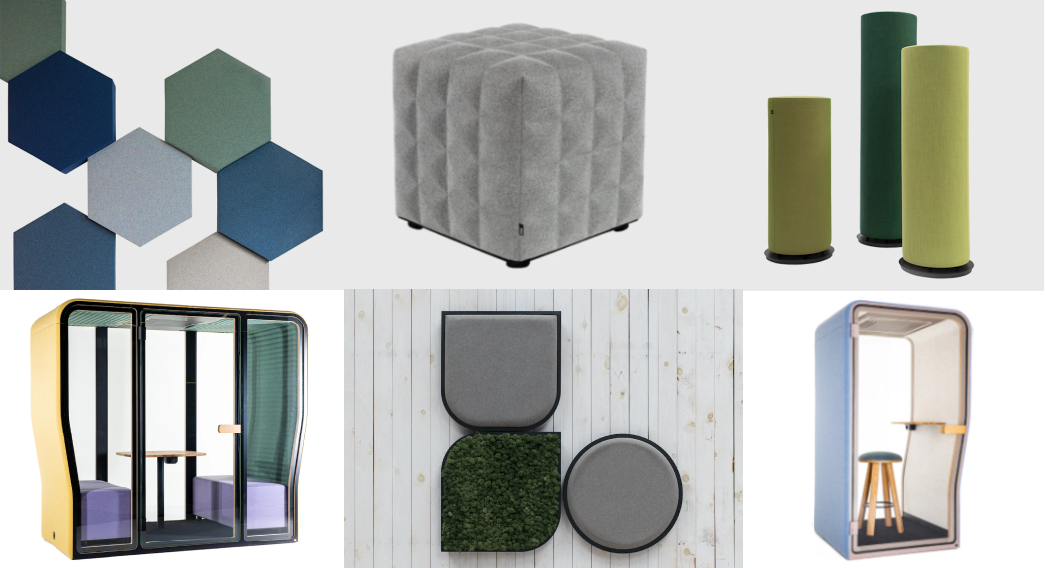 In conclusion, addressing acoustic issues in your meeting rooms is vital for effective communication and productive collaboration. By identifying common problems and implementing the right solutions, you can create a meeting environment that promotes clear, engaging, and frustration-free interactions. So remember, sound is just as important as the picture, and with the right acoustic improvements, your meetings can reach their full potential.
In conclusion, addressing acoustic issues in your meeting rooms is vital for effective communication and productive collaboration. By identifying common problems and implementing the right solutions, you can create a meeting environment that promotes clear, engaging, and frustration-free interactions. So remember, sound is just as important as the picture, and with the right acoustic improvements, your meetings can reach their full potential.
Get in touch with our expert team if you’d like to find out more.
Book your Acoustic Survey to unlock the full potential of your meeting spaces.



